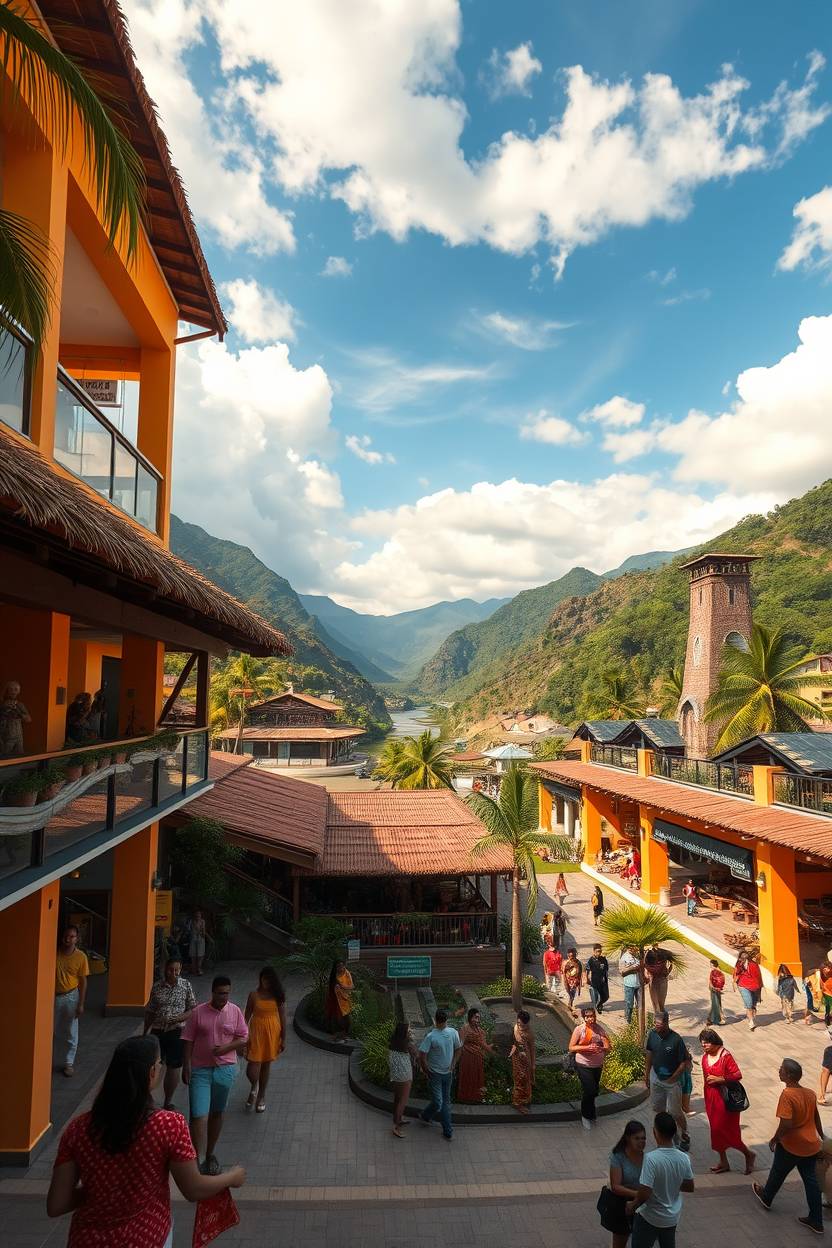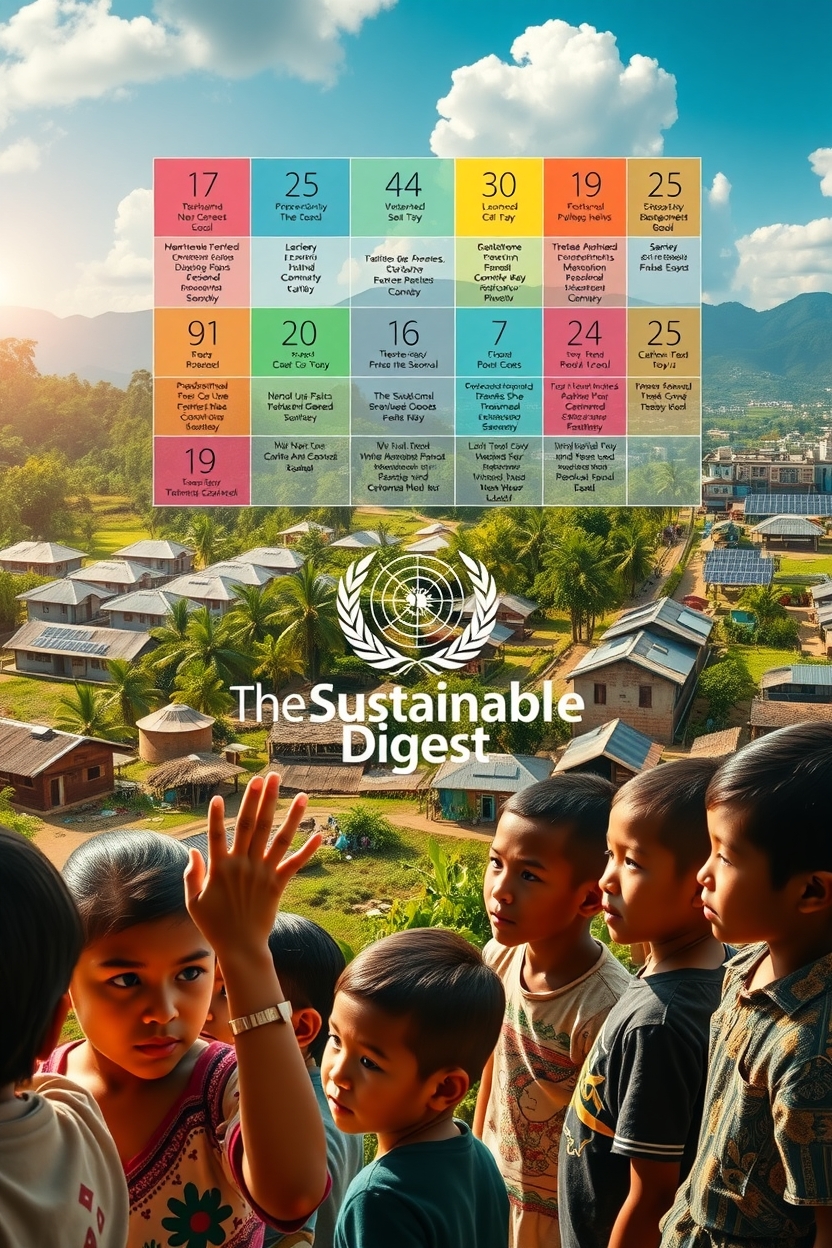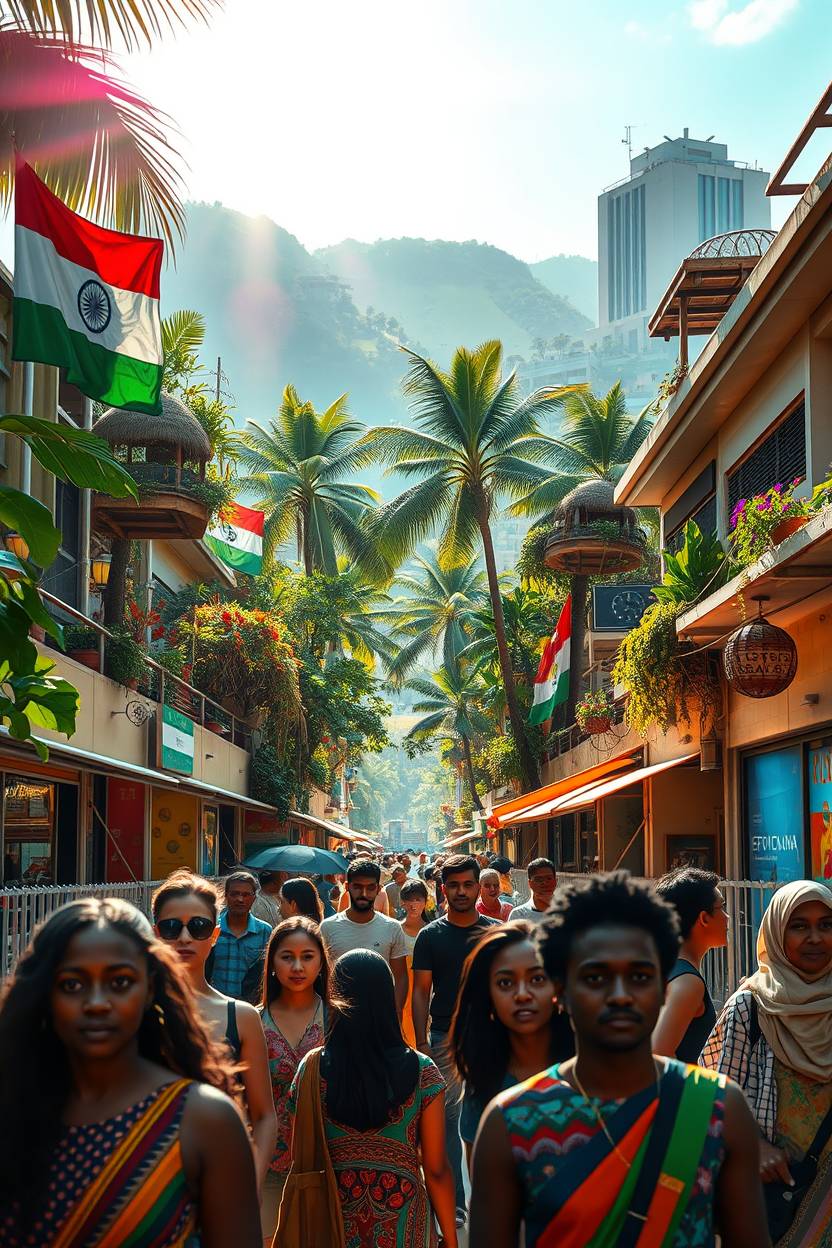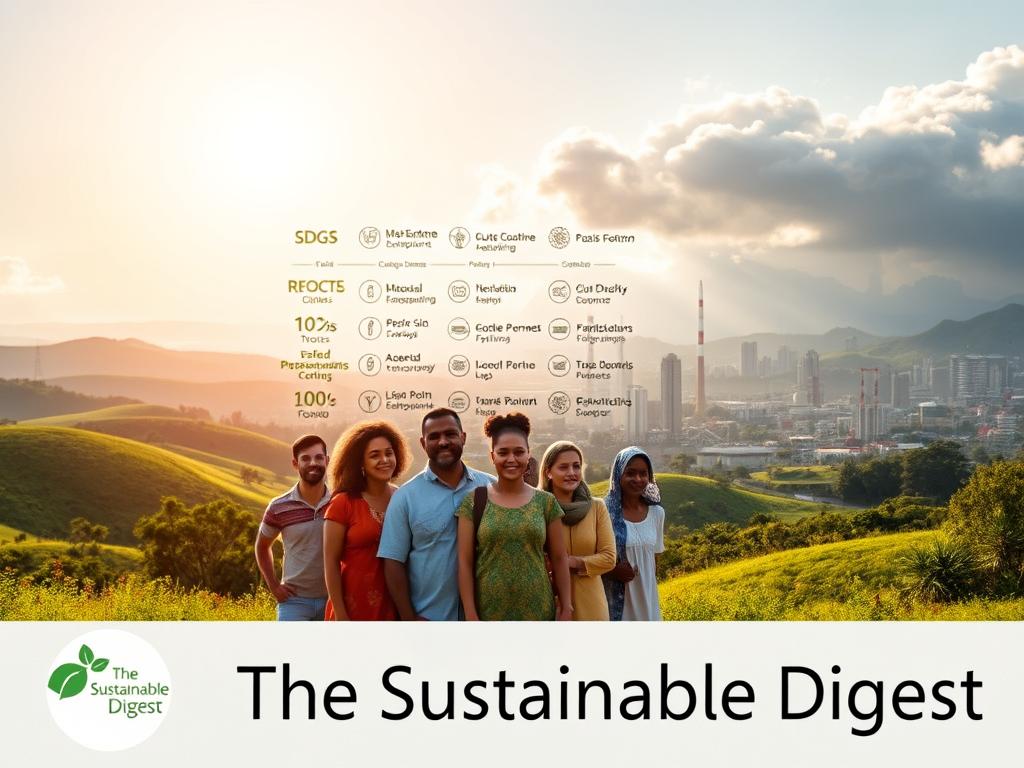The week of August 9th to the 16th saw major global events. These events showed how sustainability in international affairs is key. Many international observances focused on important sustainability issues that affect the world.
During this time, the world came together to tackle big problems. They showed how sustainable practices can be part of international policies. This showed the need for everyone to work together to solve global challenges.

Looking back, it’s clear that global perspectives on sustainability are vital. The talks and results from this week give us important lessons. They help us understand the challenges of achieving sustainability worldwide.
Global Sustainability Landscape in2023
The year 2023 is a key moment for global sustainability. International cooperation is more crucial than ever. The world faces challenges like climate change, environmental damage, and social inequality. We need to work together more than ever.

Current State of International Sustainability Efforts
International efforts have made big strides, like adopting the United Nations’ Sustainable Development Goals (SDGs). These goals help countries aim for a sustainable future. They tackle poverty, inequality, and climate change. Yet, we still need better international cooperation to tackle these global issues.
The role of sustainable development in national policies is growing. Countries are adding sustainability to their economic plans. They see the long-term benefits of protecting the environment and promoting social equity.
Critical Challenges Facing Global Environmental Governance
Despite progress, global environmental governance has big challenges. A major issue is the lack of strong environmental policies worldwide. The current system is often broken, with many agreements and groups focusing on different environmental issues.
- Inadequate enforcement mechanisms for environmental regulations
- Limited financial resources for sustainability initiatives
- The need for greater international cooperation to address global environmental issues
Overcoming these challenges will take a united effort from governments, international groups, and civil society. Together, we can overcome these hurdles and build a sustainable future.

August 9 to August 16 Reflect Review Retrospect Sustainability International Affairs
The week from August 9th to 16th was key for looking at global sustainability. It showed many important events and plans that show how vital sustainability is in world affairs.
Week’s Significance in the Global Sustainability Calendar
The week of August 9-16 was big in the global sustainability calendar. It included days like the International Day of the World’s Indigenous Peoples and World Elephant Day. These days brought up big sustainability topics, like rights for indigenous people and saving wildlife.

The International Day of the World’s Indigenous Peoples on August 9 showed how important indigenous groups are for the environment. World Elephant Day on August 12 stressed the need to keep working to save endangered animals.
Major Sustainability Developments and Diplomatic Initiatives
During this week, big sustainability news and diplomatic plans were in the spotlight. Working together on environmental issues was a big theme. Many countries showed they are serious about sustainable growth.
| Initiative | Description | Impact |
|---|---|---|
| Indigenous Peoples’ Day | Recognized indigenous communities’ contributions to sustainability | Raised awareness about indigenous rights |
| World Elephant Day | Focused on elephant conservation | Highlighted the need for anti-poaching efforts |
| International Biodiesel Day | Promoted the use of biodiesel as a renewable energy source | Encouraged sustainable energy policies |

These efforts show the ongoing work to tackle global sustainability problems. They do this through teamwork and new ideas.
Indigenous Perspectives on Sustainability
As we face sustainability challenges, indigenous views are key. They show us how to care for the environment. Their traditional knowledge helps us find new ways to live sustainably.
International Day of The World’s Indigenous People
The International Day of the World’s Indigenous Peoples is on August 9. It’s a time to think about how indigenous peoples help us achieve sustainability. This day celebrates their role in keeping our planet healthy and diverse.
It also reminds us to respect and support their rights and knowledge.

Suriname Indigenous People’s Day Celebrations
In Suriname, Indigenous People’s Day is a big deal. It shows the community’s work in keeping their culture and traditions alive. These celebrations teach us about the value of indigenous knowledge in protecting our planet.
They also give indigenous communities a chance to share their stories and struggles.
Indigenous Knowledge Systems and Environmental Stewardship
Indigenous knowledge is essential for taking care of our planet. It’s based on centuries of living in harmony with nature. By combining this knowledge with today’s sustainability efforts, we can do better for our environment.
Environmental Commemorations and Their Global Impact
The week of August 9-16 is filled with important environmental events. These events show how crucial global sustainability efforts are. They raise awareness and push for a sustainable future.
World Elephant Day (August 12): Conservation Diplomacy
World Elephant Day on August 12 brings attention to elephants facing poaching and habitat loss. It’s vital to protect them through international efforts and protected areas. Conservation diplomacy helps protect endangered species through global agreements.

International Biodiesel Day (August 10): Renewable Energy Policies
International Biodiesel Day on August 10 celebrates biodiesel’s role in renewable energy. Good policies are key to using more biodiesel and less fossil fuel. Governments and groups can help by supporting policies that encourage biodiesel.
| Renewable Energy Source | Benefits | Challenges |
|---|---|---|
| Biodiesel | Reduces greenhouse gas emissions; supports agricultural economies | Land use competition; high production costs |
| Solar Energy | Abundant resource; zero emissions during operation | Intermittent energy supply; high initial investment |
| Wind Energy | Low operational costs; reduces reliance on fossil fuels | Intermittency; potential environmental impacts on wildlife |
World Lizard Day (August 14): Biodiversity Protection Efforts
World Lizard Day on August 14 highlights the importance of lizards and biodiversity. Protecting their habitats and fighting wildlife trafficking are key. These actions help keep ecosystems healthy and strong.
By celebrating these days, we show our dedication to solving environmental problems. Through diplomacy, renewable energy, and protecting biodiversity, we aim for a greener world.
National Celebrations with Sustainability Dimensions
National celebrations are more than just cultural pride. They show the challenges and chances for sustainable growth. Countries worldwide celebrate their independence and national days. These events often show the link between national identity, economic growth, and the environment.
India and Pakistan Independence Days: Sustainable Development Challenges
India’s Independence Day is on August 15, and Pakistan’s is on August 14. These days highlight the sustainable development hurdles these nations face. Both countries have grown economically but struggle with environmental problems like pollution and climate change.
For example, India aims to boost renewable energy but still relies on coal. Pakistan also battles to manage its water resources well.
Key sustainable development challenges for India and Pakistan include:
- Reducing carbon emissions while meeting growing energy demands
- Managing water resources sustainably
- Protecting biodiversity and natural habitats
Singapore National Day: Urban Sustainability Model
Singapore’s National Day on August 9 celebrates its success in urban sustainability. It’s known for making cities livable and green. The city-state has projects like Gardens by the Bay and a good public transport system.
Its urban planning focuses on green spaces, waste management, and energy efficiency. This makes Singapore a leader in urban sustainability.
Some of the key features of Singapore’s urban sustainability model include:
- Integration of green spaces into urban planning
- Innovative water management systems
- Investment in sustainable public transportation
In conclusion, national celebrations in India, Pakistan, and Singapore show the complex relationship between national identity, economic growth, and sustainability. By looking at these events, we can understand the challenges and chances for sustainable development.

Economic Sustainability in the Fourth Industrial Age
The Fourth Industrial Revolution is changing how we think about sustainability. It’s important to understand how this change affects our economy. This knowledge is key to making our economy sustainable.
MSMEs and Sustainable Community Development
Micro, Small, and Medium Enterprises (MSMEs) are crucial for sustainable communities. They create jobs and drive innovation. In the Fourth Industrial Age, MSMEs can use technology to be more sustainable.
They can use green energy, reduce waste, and improve their supply chains. This helps them and their communities thrive.
International Trade Patterns and Environmental Standards
Global trade affects our environment. As trade grows, we need better environmental rules. The Fourth Industrial Revolution is a chance to improve these standards.
More countries and companies are focusing on green trade. They’re using eco-friendly technologies and reducing waste. This helps protect our planet.
Fourth Industrial Revolution Technologies Advancing Sustainability
Technologies like AI, blockchain, and IoT can make our world more sustainable. They help us use resources better and reduce waste. This is good for the environment and the economy.

For example, IoT helps manage energy use. Blockchain makes supply chains more transparent. These technologies help us grow our economy in a green way.
Social Dimensions of Global Sustainability Efforts
Global efforts to be sustainable are now seeing the big role of social aspects. Success in these efforts isn’t just about the environment. It also depends on the social ties within communities.

Women’s Empowerment in Sustainability Initiatives
Women’s empowerment is key in sustainability. Empowered women can lead change in their areas. They help spread sustainable habits and care for the environment.
National Women’s Day and Gender-Responsive Climate Action
National Women’s Day shows how vital gender-responsive climate action is. Adding gender views to climate plans makes sustainability efforts fairer and more effective.
Women’s and Family Day: Sustainable Household Practices
Women’s and Family Day focuses on household actions for sustainability. Small steps like cutting down on waste and saving energy can make a big difference.
Grassroots Organizations and NGOs Driving Change
Grassroots groups and NGOs lead in sustainability efforts. They work with communities, understanding their needs. They then create specific plans to help.
Cultural Heritage Preservation as Sustainability Practice
Preserving cultural heritage is a key part of sustainability. It keeps community identity alive. It also supports sustainable tourism.
In summary, the social side of global sustainability is complex. By empowering women, supporting local groups, and saving cultural heritage, we can build a better, more sustainable world.
International Cooperation Frameworks for a Sustainable Future
Global challenges need a team effort. International cooperation is key to reaching the UN Sustainable Development Goals. As the world connects more, working together is more important than ever.

Progress Toward 2030 UN Sustainable Development Goals
The UN Sustainable Development Goals (SDGs) are a call to action for everyone. They aim to end poverty, protect our planet, and bring peace and prosperity by 2030. We’ve seen progress, like fewer people living in extreme poverty and more access to education.
But, we still face big challenges. The progress is not even across all regions and goals.
Role of International Organizations in Sustainability Governance
International organizations help a lot with sustainability. They help countries talk, set rules, and get help. The United Nations works with governments, civil society, and businesses to push the SDGs forward.
Other groups, like the World Trade Organization and the International Labour Organization, help too. They deal with trade and labor issues.
Cross-Border Initiatives Highlighted During August 9-16
From August 9-16, many cross-border projects were showcased. They showed how working together can tackle big global problems. These projects focused on fighting climate change, saving biodiversity, and supporting sustainable trade.
These efforts show why countries need to work together for a sustainable future.

Conclusion: Pathways Forward for Global Sustainability
The week of August 9-16 highlights the urgent need for global sustainability efforts. It shows how important international cooperation and commitment to sustainability are. These efforts are key to moving forward.
This week focuses on many global challenges. It includes the International Day of the World’s Indigenous People and World Elephant Day. These days remind us of the need to protect biodiversity and respect indigenous knowledge.
As we move ahead, we must keep working towards the 2030 UN Sustainable Development Goals. We need to work together, using international cooperation and cross-border initiatives. This will involve governments, NGOs, and local groups.
The future of global sustainability depends on our ability to balance different areas. We need to create a culture of sustainability and use new technologies. This will help us build a fair and green world.

Key Takeaways
- Significant global events highlighted the importance of sustainability.
- International observances drew attention to critical sustainability issues.
- The need for unified global action on sustainability was underscored.
- Global perspectives are crucial for achieving sustainability.
- The week’s events provided insights into the complexities of global sustainability efforts.
- Indigenous perspectives are vital for global sustainability efforts.
- The International Day of the World’s Indigenous Peoples highlights indigenous contributions.
- Indigenous knowledge systems offer valuable insights into environmental stewardship.
